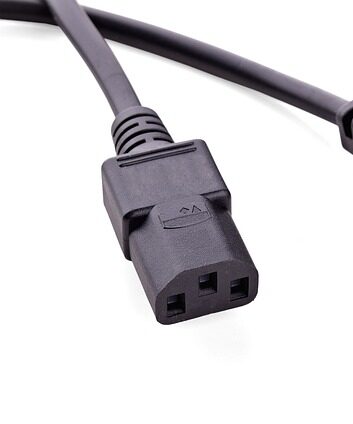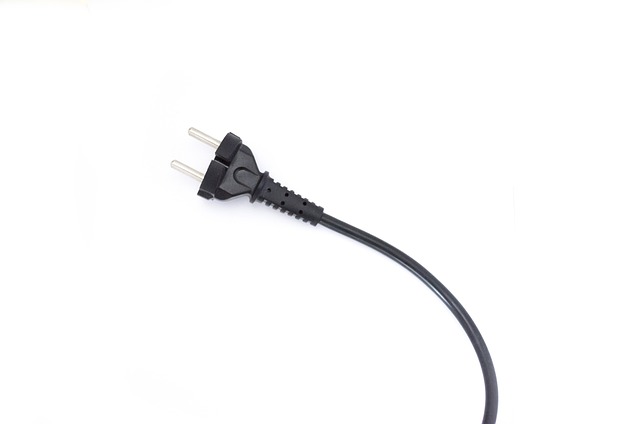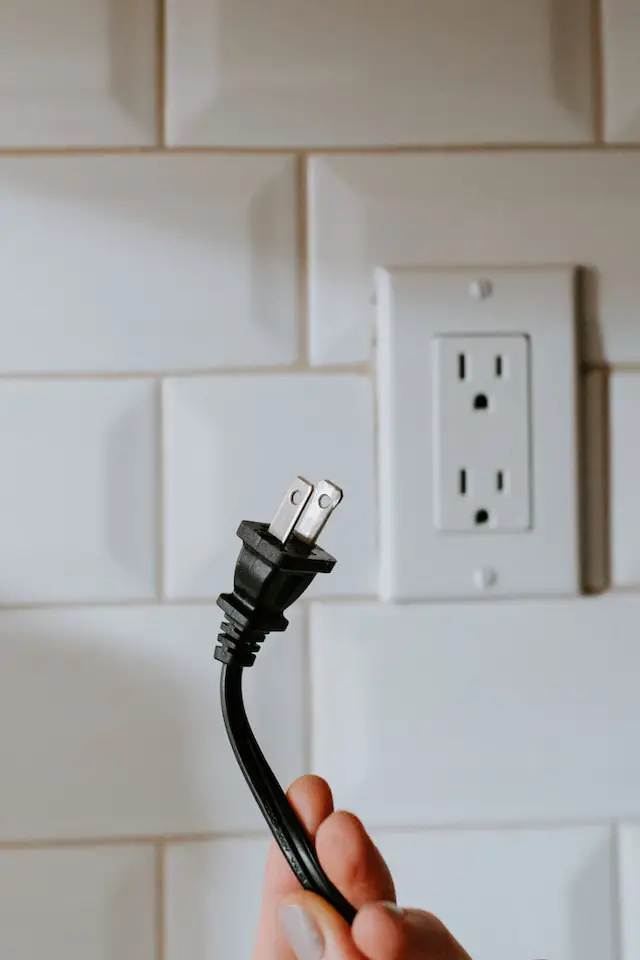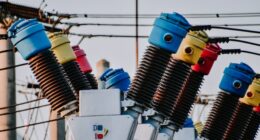The main difference between polarized and non-polarized power cords is that the former has a specific prong design to ensure proper electrical flow and safety. Non-polarized cords lack this feature but are still perfectly safe for use in most devices.
What is a polarized power cord?
(Image by Dmitriy from Pixabay)

A polarized power cord is a type of electrical cable that has one prong wider than the other. This design ensures that the cord can only be inserted into an outlet in one orientation, which helps to prevent electrical shocks and fires.
The wider prong is known as the neutral conductor, while the narrower prong is called the hot conductor. These terms refer to how electricity flows through the cord and its associated device. The neutral conductor carries current back to the power source, while the hot conductor delivers current from it.
Polarized cords are commonly used with electronics such as computers, TVs, and lamps because they provide an extra layer of safety and improve performance. By ensuring that electricity flows in a consistent direction, these cords minimize interference and reduce noise or distortion in audiovisual signals.
It’s important to note that not all devices require a polarized power cord – some appliances like certain kitchen appliances use non-polarized cords because their design doesn’t require them. So always check your device’s manual before choosing what kind of cord you should purchase for it!
What is a non polarized power cord?
(Image by Philip Pena from Pixabay)

A non-polarized power cord is a type of electrical cable that doesn’t have any distinguishing features on its two prongs. Unlike polarized cords, both prongs are identical in size and shape, making them interchangeable. Non-polarized cords are commonly used for small appliances and electronics because they’re cheaper to produce than their polarized counterparts.
One key difference between the two types of cords is safety. Polarized power cords prevent users from plugging an appliance or device into an outlet with reversed polarity, which can lead to electric shock or damage to the equipment. Since non-polarized cords lack this feature, it’s important not to use them with appliances that require grounding or if you’re unsure about the wiring within your home.
Another advantage of using a non-polarized cord is convenience. You don’t need to worry about which way you plug it into an outlet since both prongs are the same size and shape. This makes it easier when trying to reach awkwardly placed outlets behind furniture or in tight spaces.
While non-polarized power cords might be more convenient and cost-effective for certain applications, they don’t offer the same level of safety as polarized ones do. It’s always best to read manufacturer instructions carefully before choosing which type of cord is appropriate for your device or appliance needs.
Polarized Vs. Non polarized power cords – Key differences
When it comes to power cords, there are two main types: polarized and non-polarized. The key difference between these two is the way the prongs are arranged. A polarized cord has one prong that is wider than the other, while a non-polarized cord has two identical-sized prongs.
The reason for this design difference is safety. Polarized cords have been designed to ensure that electricity flows only in one direction through the appliance connected with them. This reduces the risk of electrical shock or fire hazard caused by incorrect connections.
On the other hand, non-polarized cords can be plugged in either way because they do not differentiate between neutral and hot wires. While this may seem convenient at first glance, it also means that appliances with double insulation or those where polarity doesn’t matter can use a non-polarized cord.
It’s important to note that not all devices require polarized cords; many modern gadgets include features like double insulation or automatic shut-off mechanisms which provide ample protection against electrical hazards regardless of whether they’re powered by a polarised cable or not.
Ultimately, when selecting your power cables, you should consider what device you will be using and what type of connector it requires before making your final decision on whether to go for a polarised or nonpolarised option.
Which one should you use?
Choosing the right power cord for your devices can be a daunting task, especially if you’re not familiar with the differences between polarized and non-polarized cords. So which one should you use?
If your device has a three-pronged plug, it most likely requires a polarized power cord. This is because the third prong serves as an additional grounding point to protect against electric shock.
However, if your device only has a two-pronged plug, then you can use either a polarized or non-polarized power cord. In this case, it’s simply personal preference.
It’s important to note that using the wrong type of power cord could potentially damage your device or even pose safety hazards. Always refer to your device manual or consult with an expert if you’re unsure about which type of cord to use.
In general, choosing the right power cord comes down to ensuring compatibility with your device and prioritizing safety measures. By taking these factors into consideration, you’ll be able to make an informed decision on whether to use a polarized or non-polarized power cord for your specific needs.
How to properly connect a polarized or nonpolarized power cord?
Connecting a power cord might seem like a simple task, but it’s important to do it correctly to ensure the safety of your electronic devices and yourself. Here are some steps to connect both polarized and non-polarized power cords properly.
Firstly, always make sure that the electronic device is turned off before connecting or disconnecting any cords. This will prevent any electrical shock or damage.
For polarized power cords, you’ll notice that one prong is larger than the other. The larger prong should be inserted into the wider slot on the outlet while inserting the smaller prong in the narrower slot for proper grounding.
Non-polarized power cords have two identical-sized prongs which can be easily inserted into either slot on an outlet without concern for polarity.
It’s essential not to force plugs into outlets as this may cause damage or result in overheating due to loose connections. Always insert them gently and firmly but avoid using excessive pressure.
If there are any frayed wires or damages found on either type of power cord, do not attempt to use them until they have been safely replaced by a professional electrician.
Can I use a non-polarized power cord in a polarized TV?
It is not recommended to use a non-polarized power cord in a polarized TV as it can be dangerous. A polarized TV has two prongs, one larger and one smaller, where the larger prong is for grounding purposes while the smaller prong is for hot or current carrying wire. On the other hand, non-polarized cords have two identical-sized prongs which means that there is no specific plug orientation required.
Using a non-polarized power cord in a polarized TV might result in electrical shocks because of improper grounding. The grounded wire will connect with the hot side instead of ground if you insert a non-polarized power cord into your polarised device’s socket.
Furthermore, using an incorrectly configured power cord may also cause issues such as low-quality audio and video output and even damage to your electronic devices. It’s critical to always double-check that you’re using the right type of cable for your gadgets’ safety and optimal performance.
Can I replace a polarized plug with a non-polarized plug?
It’s not recommended to replace a polarized plug with a non-polarized plug, as it can lead to safety hazards. A polarized plug is designed to ensure that the hot wire connects only to the brass screw and the neutral wire connects only to the silver screw on an outlet. This design helps prevent electrical shocks in case of any accidental contact with live wires.
On the other hand, a non-polarized plug can be inserted into an outlet either way around, without any regard for which prong is hot or neutral. Although this may sound convenient, it increases the risk of electrical shock if someone accidentally touches both prongs at once.
If you have a device with a polarized plug but your power source has only non-polarized outlets, don’t try replacing it yourself. Instead, consult an electrician who can install new outlets or change existing ones to fit your needs safely.
Safety should always be your top priority when dealing with electricity and power cords. So make sure you use them correctly and never take shortcuts that could potentially cause harm!
Featured Image By – Kelly Sikkema on Unsplash









